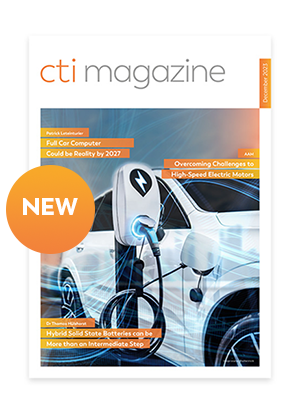Conventional, mechanically driven oil pumps must provide the power required under maximum load at each speed in the transmission. In general, under real operating conditions these pumps waste not only valuable energy, but also material and space. Electric oil pumps, on the other hand, provide the power which is actually required at the load points. Further efficiency gains in the transmission are thus possible.
Dr. Erkan Arslan, Management Concept Engineering Powertrain, Bühler Motor GmbH
Herwig Moser, Director Product Segment Powertrain, Bühler Motor GmbH
Download CTI Mag to read full article
Issue: #December 2017
Cooling and lubrication must also be ensured in extreme situations, e.g. in trailer operation, on mountain roads and at low speeds. The design of the mechanical pump has to be correspondingly generous. The bottom line is that, for most driving conditions, a mechanical pump consumes an enormous amount of energy and takes up too much space. The dependency of being operated by the combustion engine leads to hydraulic flow and pressure results, which are characterized by much higher hydraulic power than needed. As a result, the outcomes have to be reduced by control systems like mechanical blinds, valves or other components. These additional components require additional energy to operate in a synchronized way with the mechanical oil pump. In total, the energy consumption of the complete mechanical oil pump with required sub-components is higher than is required for the real need.
The way out of such problems is offered by electric gear oil pumps. They can be controlled in a precise manner so that only the actual power required at any given moment is provided. As supplementary oil pumps, they allow to absorb peak loads. The mechanical main oil pump can thus be designed to be space-, material- and energy-saving. Or an electric oil pump can replace the mechanically driven oil pump completely. In both cases, a significant increase in system efficiency is achieved.
Furthermore, electrical transmission oil pumps can be integrated into the system relatively independently of the location, be it in the gearbox or outside the gearbox. This gives the developers additional freedom.
In addition, electric pumps can be easily connected to the customerspecific electronic control systems, and thus optimally adapted to the requirements of the particular transmission solution.
Typical applications in which electrical pumps are normally used in the transmission are start/stop systems, solutions for boosting, coasting and hybrid drives

However, as described above, they can also include further functions, from coverage of peak demands to the complete replacement of the mechanically driven main transmission oil pump.
Download CTI Mag to read full article